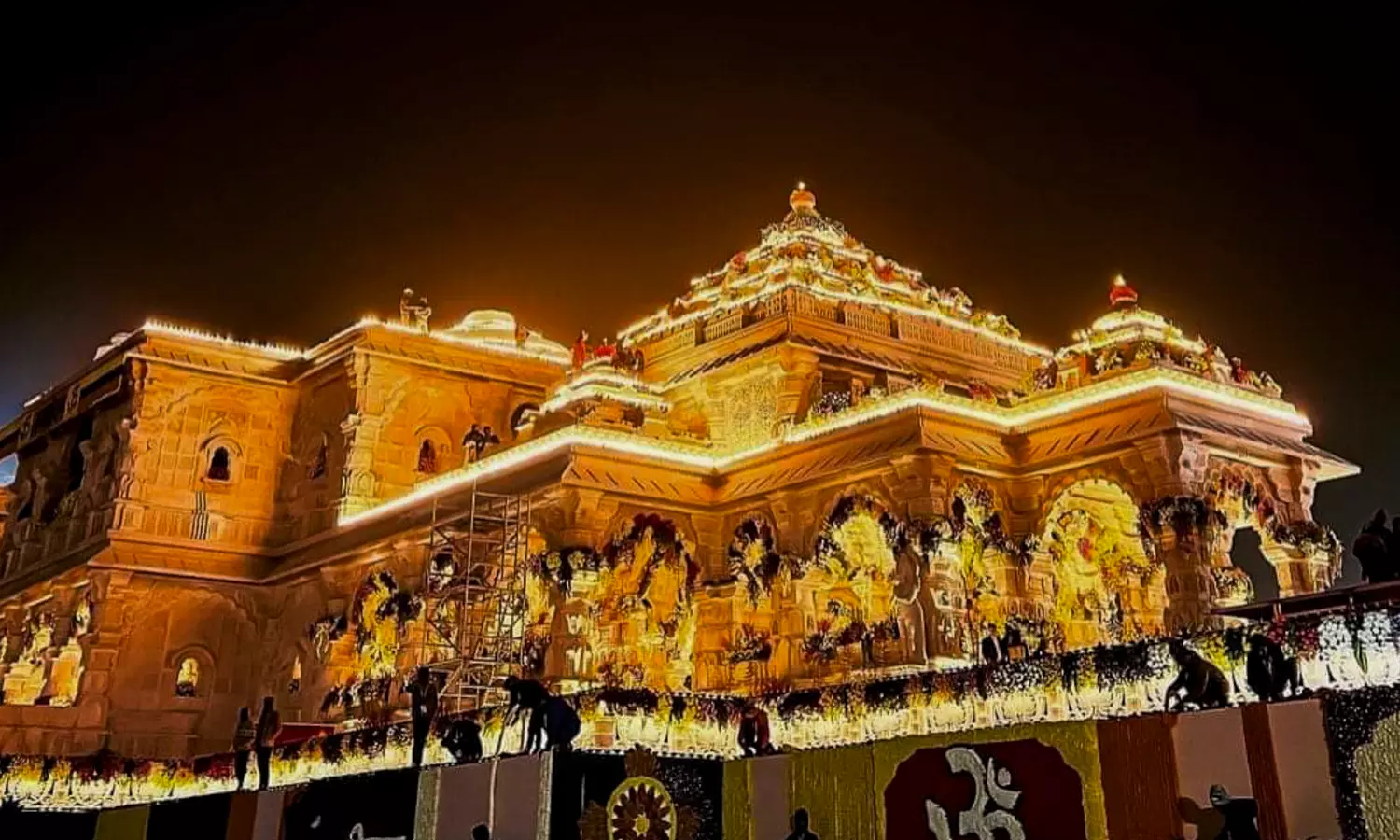DC Edit | Ram temple's opening to launch new era in India
Ayodhya's Ram Temple consecration fulfills a dream, sparking religious tourism;
By : DC Correspondent
Update: 2024-01-21 18:55 GMT

The much-anticipated consecration of the Ram temple in Ayodhya today will see the realisation of a dream for millions of faithful who believe the heroic figure of the epic Ramayana was born on this very spot. It will be the beginning of a new era of religious tourism for devout Hindus and others who may simply visit temples for their grandiose architecture and their place in a social setting.
The modern abode of Lord Ram, a divine personality thought to have lived several millennia ago, will differ vastly from ancient temples in that the new structure will be earthquake-proof even as satellite imagery has been used to help pick the very spot in which Ram was believed to have been born.
The complex historical equations of a temple on which a mosque may have come up and stood for centuries and the political equivalences of the day may take a back seat at least for a while as religious rituals take over to consecrate the shrine in which Ram Lalla will be worshipped in the sanctum sanctorum from today onwards.
It is moot whether the Prime Minister should don the role of principal Hindu devotee at the consecration ceremony because the line of separation of the state from religion has been seen to be erased in this.
There is, however, no question he had the absolute freedom of choice in following rituals for days before the event and in tracing the Ramayana trail in the heart of Tamil Nadu, visiting legendary places like Dhanuskodi, one of the southern tips of India, where Lord Ram swore to defeat Raavan, the ruler of Lanka, and where the Ram Setu (Adam’s Bridge) was thought to have begun.
In a religious visit on this trail, there may be little political profit in a state whose people have chosen a political party with a rationalist ideological leaning. But there was historical significance to be acknowledged as in the Srirangam temple where the sage Kambar recited the Ramayan and other shrines in Rameswaram and Dhanuskodi with a connection to Lord Ram, as much as there was in his visits to temples in Andhra and Kerala.
History may be fraught with religious disharmony, with the Supreme Court rightly calling out the destruction of the 16th century Babri Masjid “an egregious violation of the rule of law”, but that is behind us now with the Ram temple nearing completion and a grand mosque to be built on another plot of land in Ayodhya, on similar lines of private funding by the faithful and the devout.
The focus for now will be on the temple at the Ram Janmabhoomi. Built in traditional Nagara style, it will be most modern not only in the materials and construction methods while following the agamas but also in special forces having been readied to tackle chemical, biological, radiological and nuclear attacks, drowning incidents and even earthquakes. Such are the perils of modern life.

